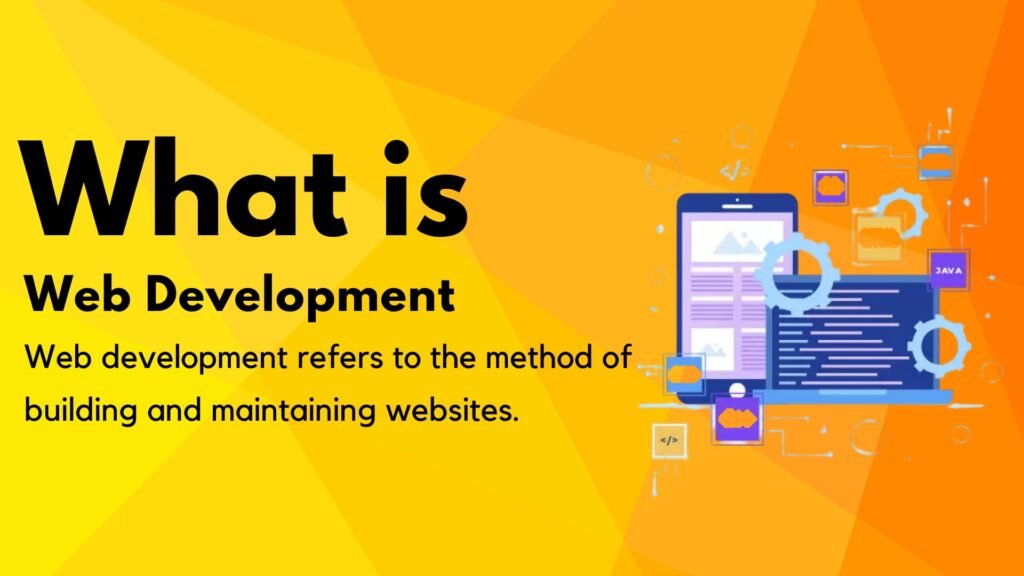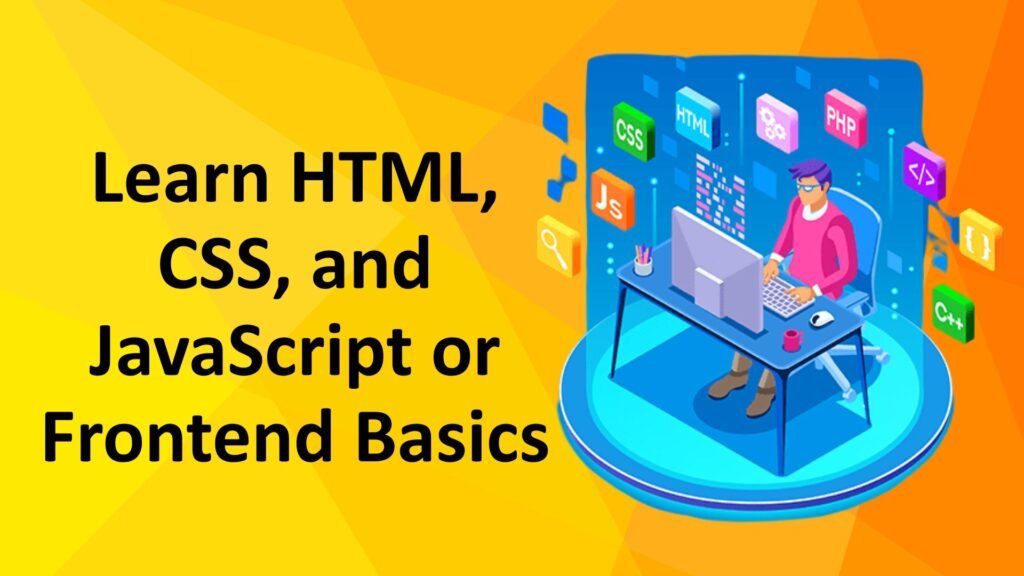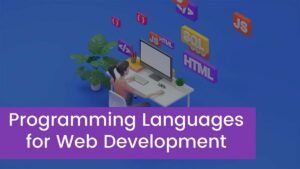If you are wondering about learning Web development, you are in the right place. This guide will take you through a structured, step-by-step, easy method to learn web development effectively.
From understanding the basics to mastering advanced topics, you will get a clear roadmap to becoming a proficient web developer. So, let’s get started!
What is Web Development?
Web development refers to the method of building and maintaining websites. It involves various aspects like web design, coding, server management, and database handling.

However, Web development might be broadly classified into three categories, which are given below
Frontend Development: This is the part of the website that users interact with directly with UI/UX, HTML, CSS, and JavaScript.
Backend Development: This is server-side logic, databases, and APIs that power the website.
Full-Stack Development: It is a unique combination of both front-end and back-end development.
Web development is a valuable skill in today’s digital era because it offers countless career opportunities and creative possibilities. Whether you want to build websites for personal projects or pursue a career as a developer, learning web development is rewarding.
Step-by-Step Guide to Learning Web Development

Here is a step-by-step guide to learn web development
Step 1: Understand the Basics of the Internet and How the Web Works
Before starting coding, it is important to understand how websites function, how browsers interpret code, and how the internet facilitates communication between clients and servers. For it, you have to
- Learn about HTTP/HTTPS, domain names, DNS, hosting, and servers.
- Understand how web pages are rendered by browsers.
Step 2: Learn HTML, CSS, and JavaScript or Frontend Basics
So, you have to learn these three fronted basics from the foundation of web development. These are given below
HTML (HyperText Markup Language): It structures web pages.
CSS (Cascading Style Sheets): It styles and designs the pages.
JavaScript: It adds interactivity and dynamic behavior to web pages.
Step 3: Practice by Building Small Projects
Once you have grasped the basics, then it is time to start building simple projects like
- A personal portfolio website
- A to-do list app
- A simple landing page
Step 4: Learn Responsive Design and CSS Frameworks
Additionally, Websites should be mobile-friendly and visually appealing. That’s why you have to learn responsive designs and CSS frameworks, like
- Learn about Media Queries for responsiveness.
- Use CSS frameworks like Bootstrap and Tailwind CSS for faster styling.
Step 5: Understand Version Control
Version control helps track changes and collaborate with others. So, you have to understand version control. So, you have to learn
- Learn Git basics like commit, push, pull, branch, and merge.
- Use GitHub to store and share your projects.
Step 6: Learn JavaScript in Depth and Frameworks
After learning basic JavaScript, move to advanced concepts and frameworks. You have to learn something more important, such as
- You have to Learn ES6+ features like arrow functions, promises, and async/await.
- You need to explore front-end libraries and frameworks like React.js, Vue.js, or Angular.
Step 7: Learn Backend Development (Node.js, Express.js, Databases)
- After that, you have to Learn about server-side programming using Node.js and Express.js.
- Then understand databases like SQL – MySQL, PostgreSQL / NoSQL – MongoDB.
- And then Learn APIs (REST & GraphQL) to handle data requests.
Step 8: Explore Full-Stack Development
Well, if you want to become a full-stack developer, then you have to combine your front-end and back-end knowledge. For it, you have to
- Use MERN (MongoDB, Express, React, Node) or MEAN (MongoDB, Express, Angular, Node) stack.
- Build full-stack projects like an e-commerce website or a social media app.
Step 9: Learn Deployment and Web Hosting
Once your projects are ready, you have to deploy them online. For it, you need to
- Learn hosting platforms like Netlify, Vercel, and Firebase for front-end apps.
- Use Heroku, DigitalOcean, or AWS for backend hosting.
Step 10: Keep Learning and Stay Updated
However, Technology evolves rapidly, so continuous learning is necessary. So, you can follow these tips
- You can follow web development blogs and YouTube channels.
- You can also join developer communities like Stack Overflow, Reddit, and GitHub.
- You should work on real-world projects and contribute to open-source.
Conclusion
Learning web development is a step-by-step process that requires dedication, practice, and continuous learning. Start with the basics, build projects, and gradually advance to more complex concepts.
With consistent effort, you can become a skilled web developer and create amazing websites and applications. So that’s all you need to know about how to learn web development. Happy coding!




